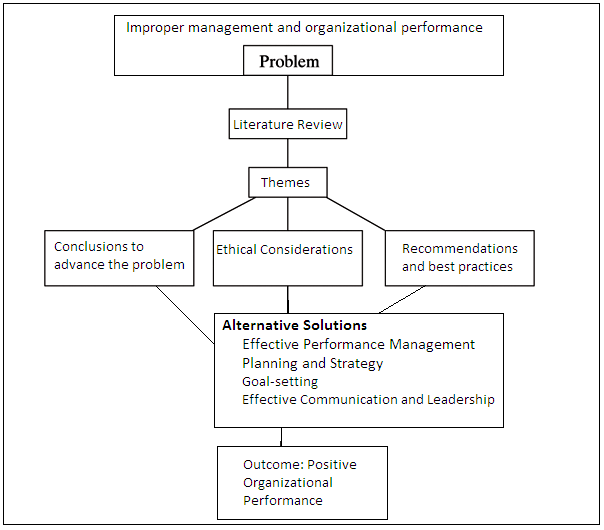Alternative Solutions
Several solutions can be used to deal with improper management. Such solutions should empower, mentor, and support the performance of every employee. This practice will ensure every employee focuses on the targeted organizational goals. The first alternative solution is Effective Performance Management (EPM). This approach focuses on new practices, ideas, technologies, and concepts to support the performance of different workers. The next solution is “planning and strategy” (Reilly, Minnick, & Baack, 2011, p. 46). Managers should identify the best practices to get the targeted outcomes. Planning is a powerful practice that ensures the right individuals and resources are in place. Proper planning ensures different workers complete specific tasks. A new strategy should be used to promote the functioning of the organization.
The third solution is known as goal-setting. Managers should identify new goals for their companies. The approach will address every gap arising from poor managerial practices. A proper managerial approach will identify new goals. Such goals should be relevant, attainable, and measurable (Rajhans, 2012). This solution will be critical towards dealing with improper management. The fourth solution should focus on effective leadership. These practices will address every organizational problem.
Plausibility of the Above Solutions
The above four solutions have the potential to deal with poor morale and improper management. Effective leadership promotes new practices such as “decision-making, problem-solving, and communication” (Reilly et al., 2011, p. 76). These organizational aspects will eventually result in positive performance. The other solution is goal-setting. A new goal should be identified. The goal can “focus on the best strategies to deal with burnout, low morale, and mismanagement” (Reilly et al., 2011, p. 79). The next solution is EPM. This approach embraces new strategies that have the potential to improve the level of performance. Organizational leaders should be ready to “manage different activities, roles, and responsibilities” (Reilly et al., 2011, p. 103). They can also use modern technologies to achieve the best goals. Proper planning is critical because it addresses the gaps affecting a specific firm. A powerful strategy should also be used to achieve every targeted goal. These solutions can also be combined to get the best results.

Intended and Unintended Consequences
The purpose of these solutions is to deal with improper management. The solutions will present new managerial practices and ideas. The organization will also acquire new technologies to improve the level of performance. Such intended consequences will make more companies profitable. These solutions will also produce unintended consequences. For instance, positive practices such as communication, teamwork, and decision-making will emerge (Rajhans, 2012). The power-distance between the workers and managers will also decrease (Rajhans, 2012). The workers in the organization will always work together. These consequences are critical towards supporting the performance of the targeted company.
Advancing the Best Solution
The above solutions have the potential to address the targeted organizational problem. The four solutions can be combined to improve the level of performance. Such solutions will ensure every employee is part of a team. However, the EPM concept can produce the best outcomes. Performance Management (PM) is a powerful practice that encourages workers to focus on the best goals. The concept also embraces the use of new technologies to achieve the targeted objectives. This approach will promote new practices such as collaboration. Workers will be ready to address their problems (Yones, 2012). This solution has the potential to address the targeted organizational problem.
Reference List
Rajhans, K. (2012). Effective Organizational Communication: A Key to Employee Motivation and Performance. Inter-science Management Review, 2(2), 81-85.
Reilly, M., Minnick, C., & Baack, D. (2011). The Five Functions of Effective Management. San Diego, CA: Bridgepoint Education, Inc.
Yones, M. (2012). Dysfunctional Leadership and Dysfunctional Organizations. Executive Journal, 1(1), 1-4.